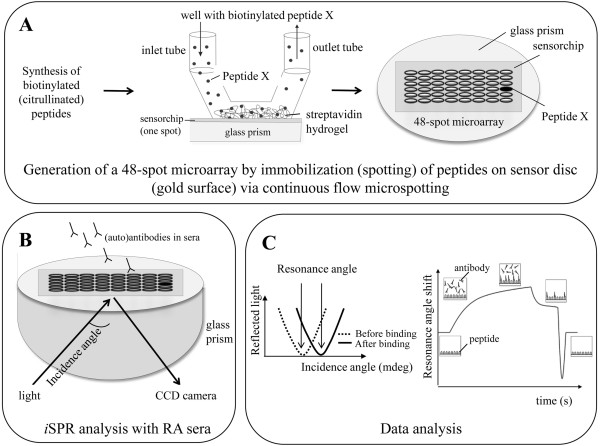Figure 1.
Schematic overview of autoantibody detection by microarray surface plasmon resonance imaging. (A) Biotinylated peptides are immobilized on a sensor chip which contains a gold surface with a streptavidin hydrogel on top. Each peptide (48 in total) is pumped back and forth along a specific position of the chip for one hour. This leads to a 48-spot microarray, in which each spot contains a different peptide. (B) Interactions of serum antibodies with peptides on the 48-spot microarray are detected by surface plasmon resonance imaging (iSPR). The incident light is reflected at the sensor chip surface and detected by a charge-coupled device (CCD) camera. (C) At a certain incidence angle, the amount of reflected light will be at a minimum. The binding of an antibody leads to a mass change at the surface and results in a shift in the resonance angle. The resonance angle is plotted against time to generate a sensorgram.

